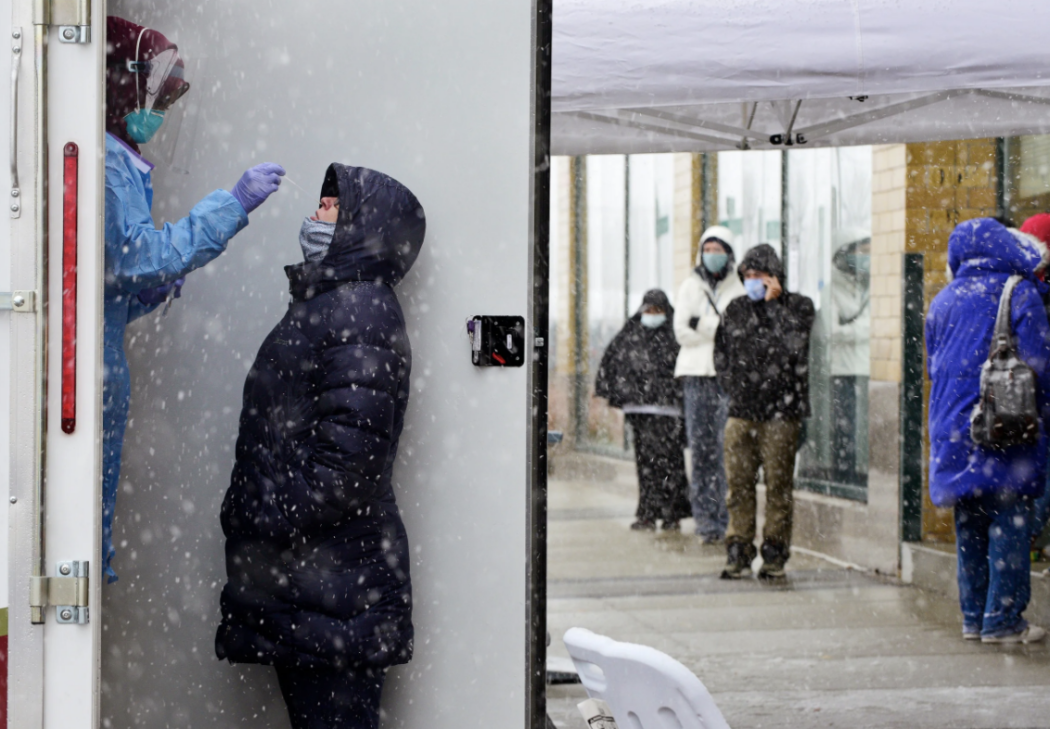The Centers for Disease Control head has recently warned that this coming winter may be the “most difficult time in U.S. public health history,” as cases continue to rise rapidly across the globe
The number of hospitalized patients due to the COVID-19 virus has surpassed 100,000 for the first time within the U.S. this past week, nearly doubling the number from the virus’s deadly first wave this past spring. As death rates continue to rise, U.S. hospitals struggle to keep the record number of patients alive.
Things appear to be looking grim for the upcoming colder season, as CDC officials are predicting that total deaths from the virus could reach “close to 450,000” by February unless a large percentage of Americans take more precautions, this appearing evermore unlikely as we delve deeper into the holiday season.
“It’s not a fait accompli,” noted Dr. Robert Redfield, the director of the C.D.C., in an address to the Chamber of Commerce Foundation. “We’re not defenseless. The truth is that mitigation works. But it’s not going to work if half of us do what we need to. Probably not even if three-quarters do.”
Winter outbreaks of the virus may be worsened by the oncoming of colder weather and drier indoor air, both of which boost the transmission of the virus. Winter’s colder air will promote the survival of the virus, driving more people indoors where social distancing becomes much harder to promote.
The country is in need of some drastic unification, as many Americans continue to complain of “pandemic fatigue” as a means to dodge social distancing and mask-wearing guidelines.
As the holiday season kicks off in full swing, the C.D.C. warned Americans not to travel over the holidays. Dr. Cindy Friedman, chief of the travelers’ health branch at the C.D.C., reiterated that with cases rising, “the safest thing to do is to postpone travel and stay home,” saying that even a small percentage of infected travelers could translate into hundreds of thousands of additional infections.

According to a study done by The Hill, a reported 38 percent of Americans chose not to alter their Thanksgiving plans amidst warnings from government and state officials, electing to still meet in groups larger than 10 people and neglecting social distancing guidelines.
And the Christmas season does not appear to be looking any better. For those who still choose to travel, the C.D.C. is now recommending travelers get tested for the virus before and after their trips to limit transmission of the virus.
The U.S. has reported more than 14.4 million cases and over 279,000 deaths from the COVID-19 pandemic, and the numbers only continue to grow. Even with a vaccine within reach, it’s imperative for Americans to continue to follow C.D.C. guidelines to ensure that state healthcare systems don’t become strained, a point that was highly stressed during the first wave of the pandemic.
In regard to the vaccine, federal officials continue to suggest that those who are not in the priority groups — healthy adults under 65 who do not work in health care or qualify otherwise as essential workers — should have access to the vaccine by May or June, as the supply will only be enough by then. Yet a lot must go right for this to happen, the first of which being the approval of the Pfizer and Moderna vaccines by the Food and Drug Administration.
The closer we get to what could be the end of this nearly year-long pandemic, the more vital it becomes than ever to continue practicing social distancing, mask-wearing and sanitation to endure this long winter ahead.





